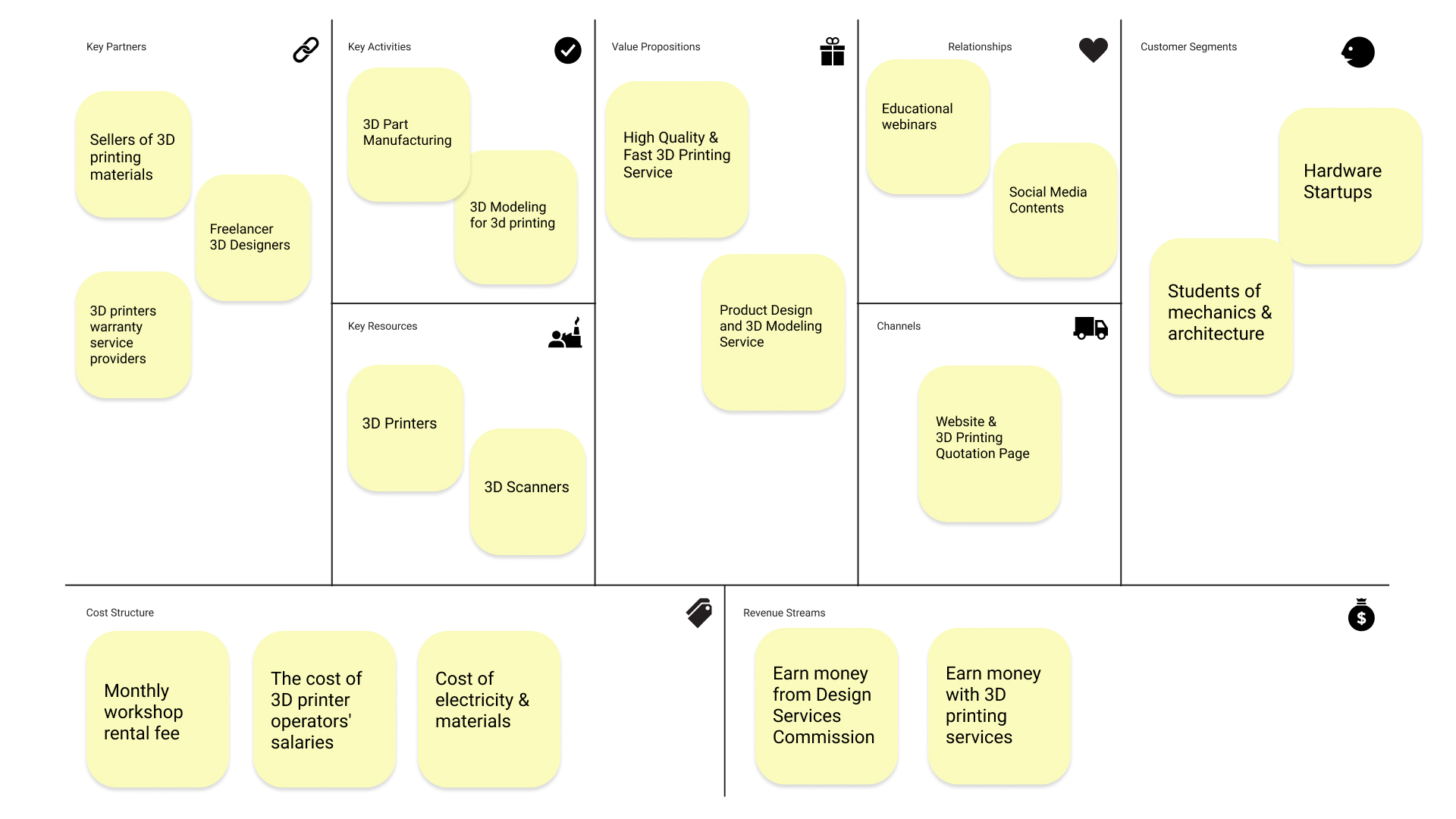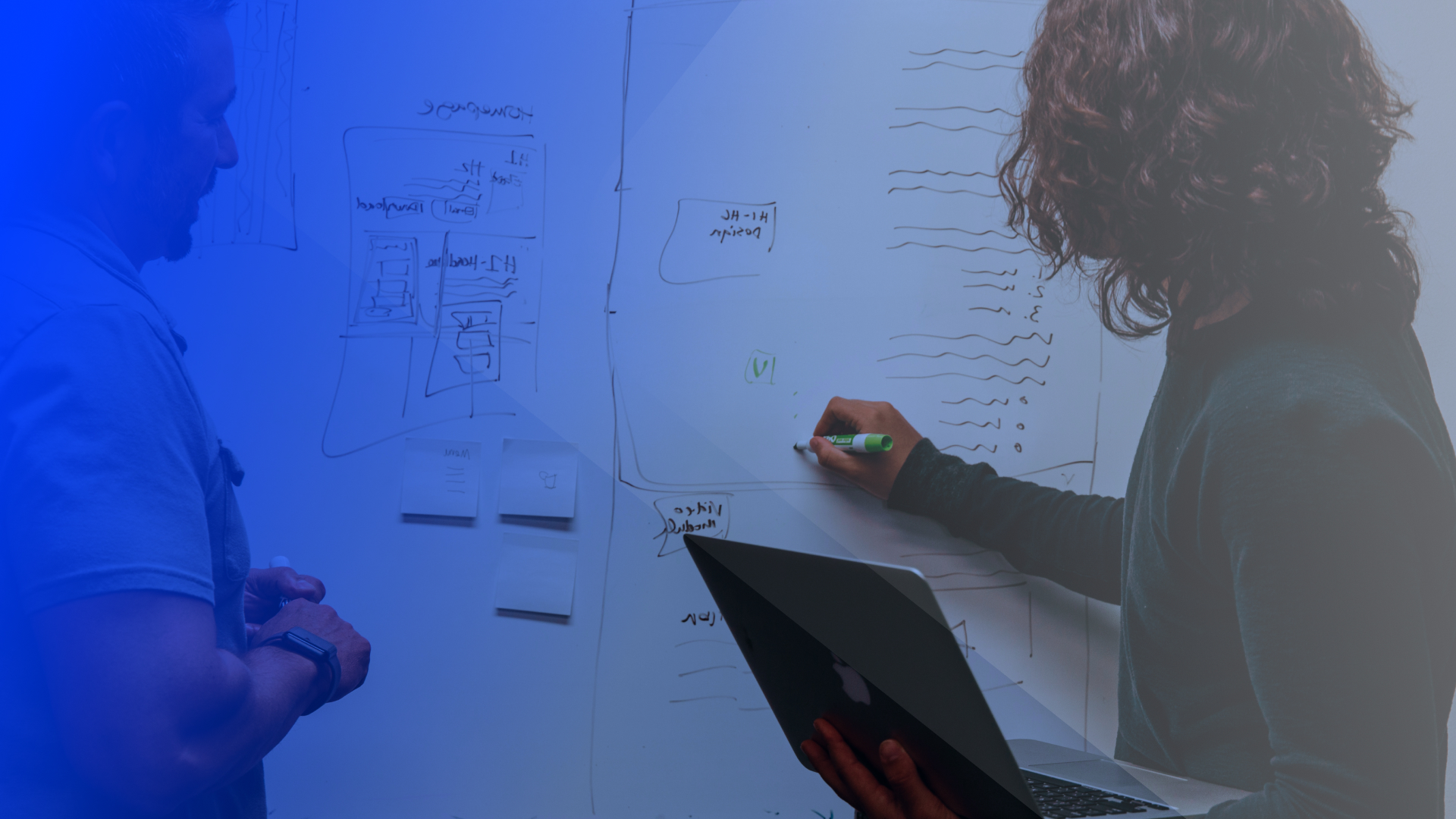What is a business model?
The most basic explanation for a business model is “the model your business has to make money”. It explains four things:
- The product or service that a company sells
- Marketing technics
- Predicted expenses
- How the business will make a profit
Following are several 3D Printing related business categories, for each of these segmentations several business models can be defined:
On-demand manufacturing
This way, you will only manufacture products that are demanded and you do not face the problem of extra and unnecessary production. In an on-demand manufacturing business model, the speed and ability to produce are so important. In this business model, customers are more satisfied as the actual product is exactly what they want.
Manufacturing as a service (MaaS)
In today’s digital world, new paradigms are needed to be applied in order not to fall behind in the market. This way, Services, and products are integrated into one product-service system. In 3d printing business, customers can upload their files get a price quotation, and then place an order, as the digitalization of the world and marketplace enables you to provide your customers with a service-oriented way of manufacturing. 3D printing is one of the major industries following this business model since 3D printing directly manufactures unique parts based on 3D models.
This way production becomes more efficient as all components are networked to create a more efficient final product.
Mass Customization
Mass customization is the process of delivering market goods and services that are modified to satisfy a specific customer’s needs.
Mass customization is delivering services and products based on each customers’ needs. A good example of this business model is dental implants. Dental implants should all be exclusively designed for each person.; using 3D printing these customizations would be completely done without any additional cost unlike traditional manufacturing and all complicated geometrical shapes and designs can be produced.
Direct to consumer business model
In the direct consumer business model or d2c, the businesses provide the customer with the service or their product instead of retail or wholesome sales.3D printing companies tend to stay in touch with their customers using different platforms which made it easier than ever before to reach their clients and customers and to provide them with the ordered product.
Mass variety
Mass variety is when the manufacturers create different varieties of a product. They offer a wide variety of options to their customers. This business model is used in the fashion industry and jewelry design. e.g. in jewelry design, there is a basic design and make hundreds of variations. The display version( in the website or the store )is hollow and made with gold and silver until customers demand the actual piece. This way they are assured that they don’t produce something that wouldn’t be sold.
Mass segmentation
This model limits variety, and it is proper to b2b businesses in which the customers’ needs are predictable. Each version serves a single segment and differs from the others enough that conventional manufacturers would need costly new machine tools to make all of them, so additive manufacturing can produce them at a lower cost.
Mass modularization
In this business model, the body of the product is printed, and the other segments are interchangeable. This business model is mainly applicable to electronic devices.
The major issue with this model is to find which body and modules to place.
Mass complexity
Additive manufacturing makes it possible to produce a variety of product versions at a low cost. In this business model, various complex prototypes are produced until they reach the intended product.
Mass standardization
Mass standardization is used for small-scale production which does not make sense in traditional manufacturing. For example, Conventional manufacturing processes for OLED screens waste a lot of expensive light-emitting electrochemical materials but using additive manufacturing, the materials are handled more precisely so the final cost is a lot lower.
Startups in 3D Printing
There are many active startups in the field of 3D printing. Below are some of the most well-known ones in this field:
Layers
Layers is a platform designed to help you manage your 3D printing business. You can easily create your online shop and access it with your sub-domain or your own domain name. Using this shop, your customers can upload their 3D models, get price quotations, and place orders.
Shapeways
Shapeways is a dutch company and start-up which tries to make world-class 3D printing more accessible to everyone through automation, innovation, and digitization.
Hubs(3D hubs)
3D hubs is also a dutch platform that is now owned by protolabs. Hubs is an online manufacturing platform that offers businesses on-demand access to a global network of manufacturing partners. It provides other services such as CNC machining and injection molding well as 3D printing.
Xometry
Xometry is an American platform that provides an on-demand industrial parts marketplace.
Shopify for 3D printing
Shopify is a platform that enables people to start their online shop. Using Shopify they can create a 3d printing shop and offer online payment to their clients. However, Shopify is not designed exclusively for 3D printing so customers can not get an idea of the printability of their objects or check its illustration, define different factors that affect the final price, etc. However, it provides customers with a minimum service in which they can offer a 3D printing service.
3d printing quotation software
A website is one of the most important prerequisites for starting a 3D printing business.
Setting up a 3D printing website that allows users to upload 3D files and price them online, requires skills such as coding and designing a professional interface.
Layers is a platform designed to help you manage your 3D printing business. You can easily create your online shop and access it with your sub-domain or your own domain name. Using this shop, your customers can upload their 3D models, get price quotations, and place orders.
What is a 3D Printing Business Model Canvas?
A business model canvas is a template showing the business model using a visual chart. A business model enables people to understand the business model in a structured way. It gives information about who your customers are, what service you provide, and how your business makes money.
3D printing value propositions
The quality of production might be a 3D printing value proposition. Consider your team and company. Customers who use 3D printing services do not have 3D models, so companies that offer design services can offer more value to their customers.
Below is the Sample business canvas of a 3D printing company:








